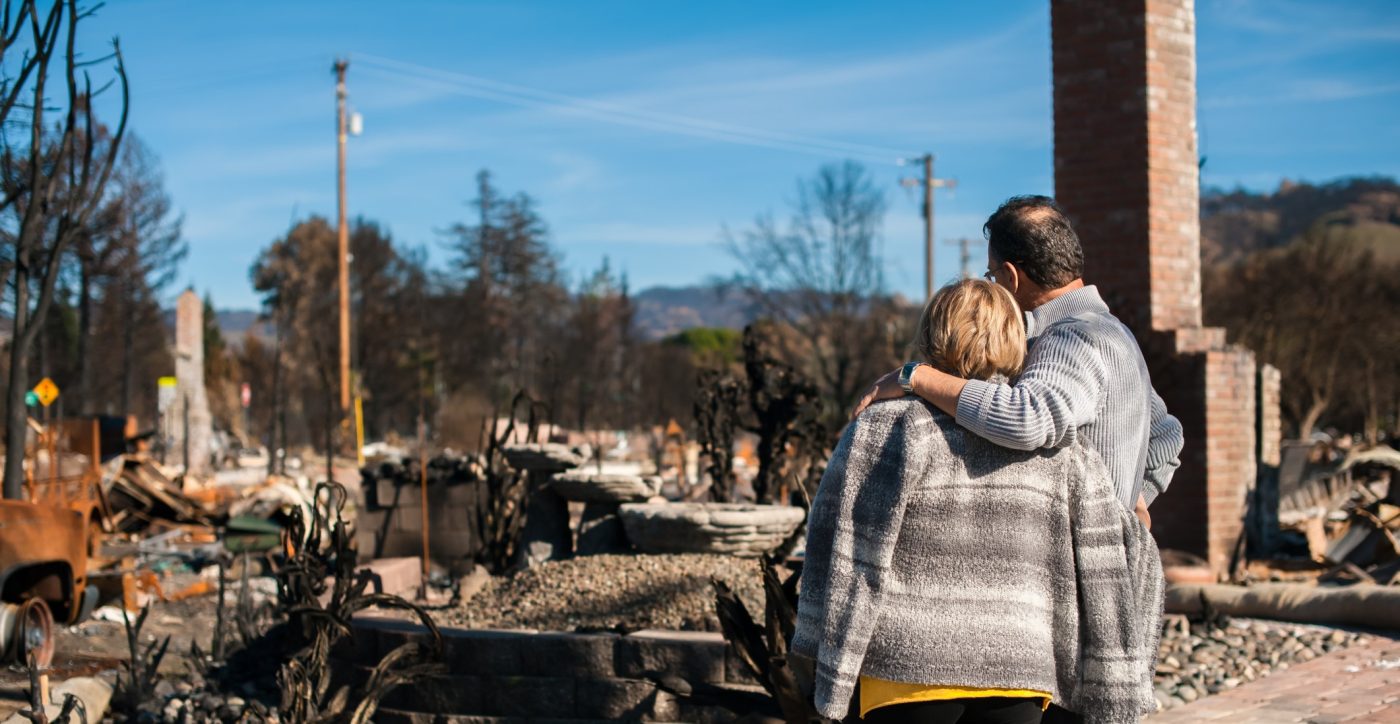In the face of disaster, communities worldwide rely on the generosity and compassion of individuals willing to lend a helping hand to those in need. Disaster relief granting from donor-advised funds plays a critical role in providing immediate and long-term assistance to communities impacted by devastating events. Many often wonder what the disaster relief process looks like and how this can align with granting strategies. The Center for High Impact Philanthropy at the University of Pennsylvania developed a thoughtfully crafted outline of the four stages of disaster relief to raise awareness of the phases during these times.
1. Response – Local and international organizations often unite to provide impacted communities with a response of immediate relief. These efforts range from intense search and rescue operations to less invasive measures. This support includes supplies, trained personnel, medical care and more.
2. Recovery – By establishing the basis for long-term infrastructure rebuilding, recovery sets the stage for progress. Physical infrastructure (e.g., roads, telecommunications and schools) and nonphysical infrastructure (e.g., functioning government, healthcare systems and education systems) are restored. As communities recover from a disaster, current systems have the potential to be rebuilt and revived in a new and improved way.
3. Risk Mitigation – Initiating proactive strategies that reduce the likelihood and severity of a disaster while fostering resilience within communities is the essence of risk mitigation. These strategies aim to mitigate the damage by building better structures, improving systems and creating a safer environment.
4. Preparedness – Even when diligently following the three previous stages, risks continue to be present. Communities can learn how to become better prepared for disasters by developing protocols, performing drills and more.
Understanding the four stages of disaster relief lays the groundwork for the actions that promote effective and impactful granting. Because funding often moves quicker through donor-advised funds than private foundations, our donors play a critical role in the Response phase. However, giving through other phrases of disaster relief helps build the infrastructure, strategies and policies that can prevent future disasters. Some questions to consider:
- What phase(s) of disaster relief do I grant to most? Where have I granted the least?
- What phase(s) of disaster relief best fit my grantmaking style and/or philanthropic values?
- What phase(s) of disaster relief am I curious about exploring?
By following the set of guidelines below, donors can adopt practices that foster a more resilient and sustainable impact across all four stages.
Take the long view – Even though the media may emphasize a disaster for a limited period, it is vital to recognize that the impacts extend far beyond the fading headlines. Many issues may arise as long-term effects. By investing in comprehensive efforts beyond the immediate aftermath, communities will become recipients of impactful transformations.
Avoid sending stuff – While the intention behind such items is often well-meaning, uncoordinated shipments can overwhelm already-strained logistics and hinder efficient distribution. Because of other time-sensitive priorities, these donations often remain untouched without the proper resources to sort through them. The Center for High Impact Philanthropy at the University of Pennsylvania suggests that sending cash is the best option.
Avoid self-deployment – Despite the initial appeal of addressing the urgency of a problem through self-deployment, it is pivotal to recognize the trained professional organizations that can effectively tackle such complex issues. Without the proper training, these individual volunteers can disrupt operations and pose safety risks.
Stay Educated – In today’s digital age, the abundance of online information readily available empowers individuals to acquire extensive knowledge. This knowledge enables individuals to make educated decisions, grasp evolving needs, and effectively contribute to relief efforts.
Connect with a local community foundation or United Way – These types of organizations have a deep understanding of the local context and needs of their communities, enabling them to provide targeted and impactful assistance. By donating to a community foundation or United Way, philanthropists can ensure their contributions will be supplied directly to resources to support disaster relief. Our staff at the Community Foundation is here to help you navigate using your charitable fund in response to disasters. Contact a Philanthropic Advisor with any questions at info@growyourgiving.org.
Below are some excellent resources that provide valuable insights and guidance for further education on disaster relief giving.
7 Tips for Disaster Giving – Greater Kansas City Community Foundation (growyourgiving.org)


